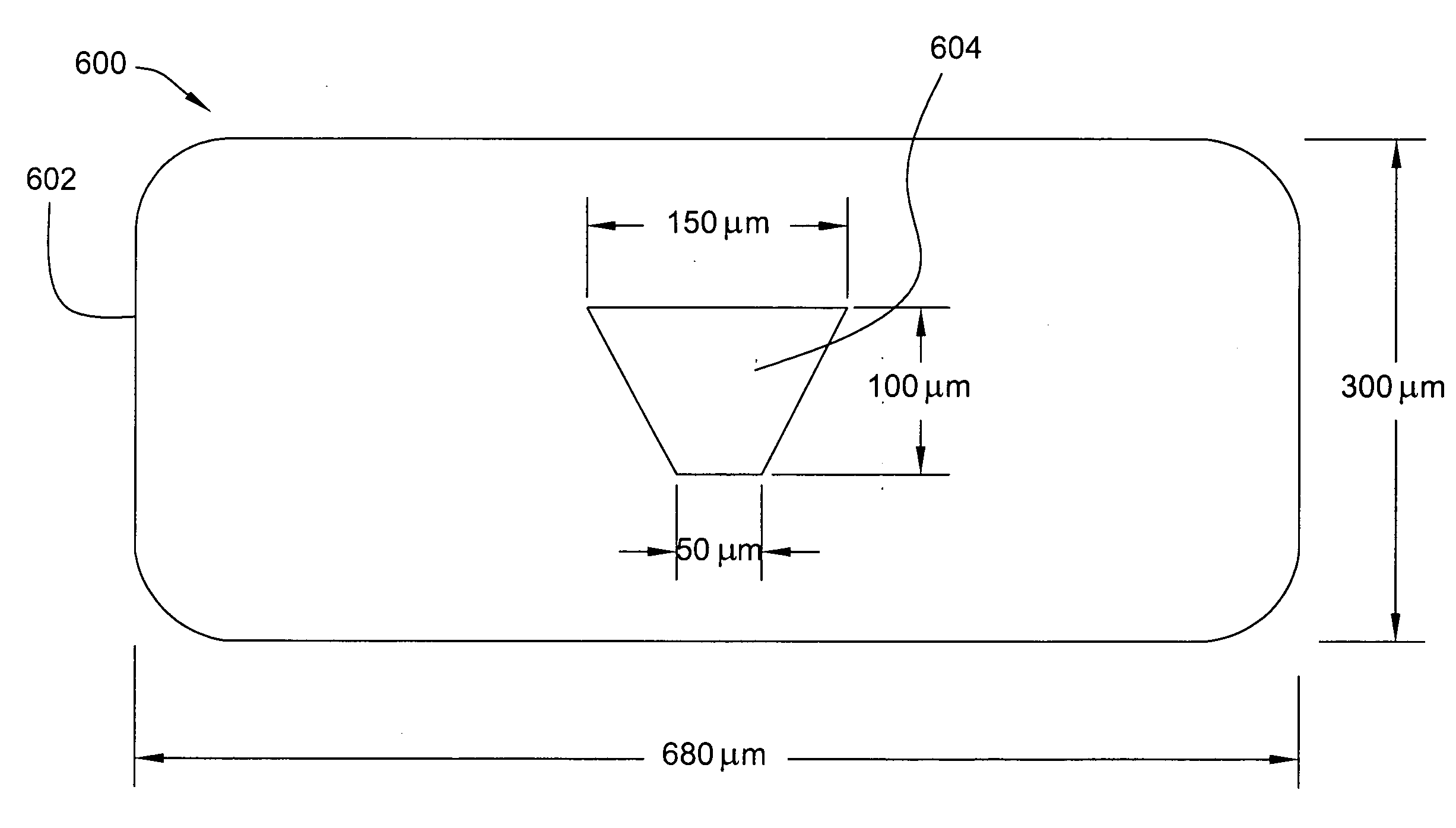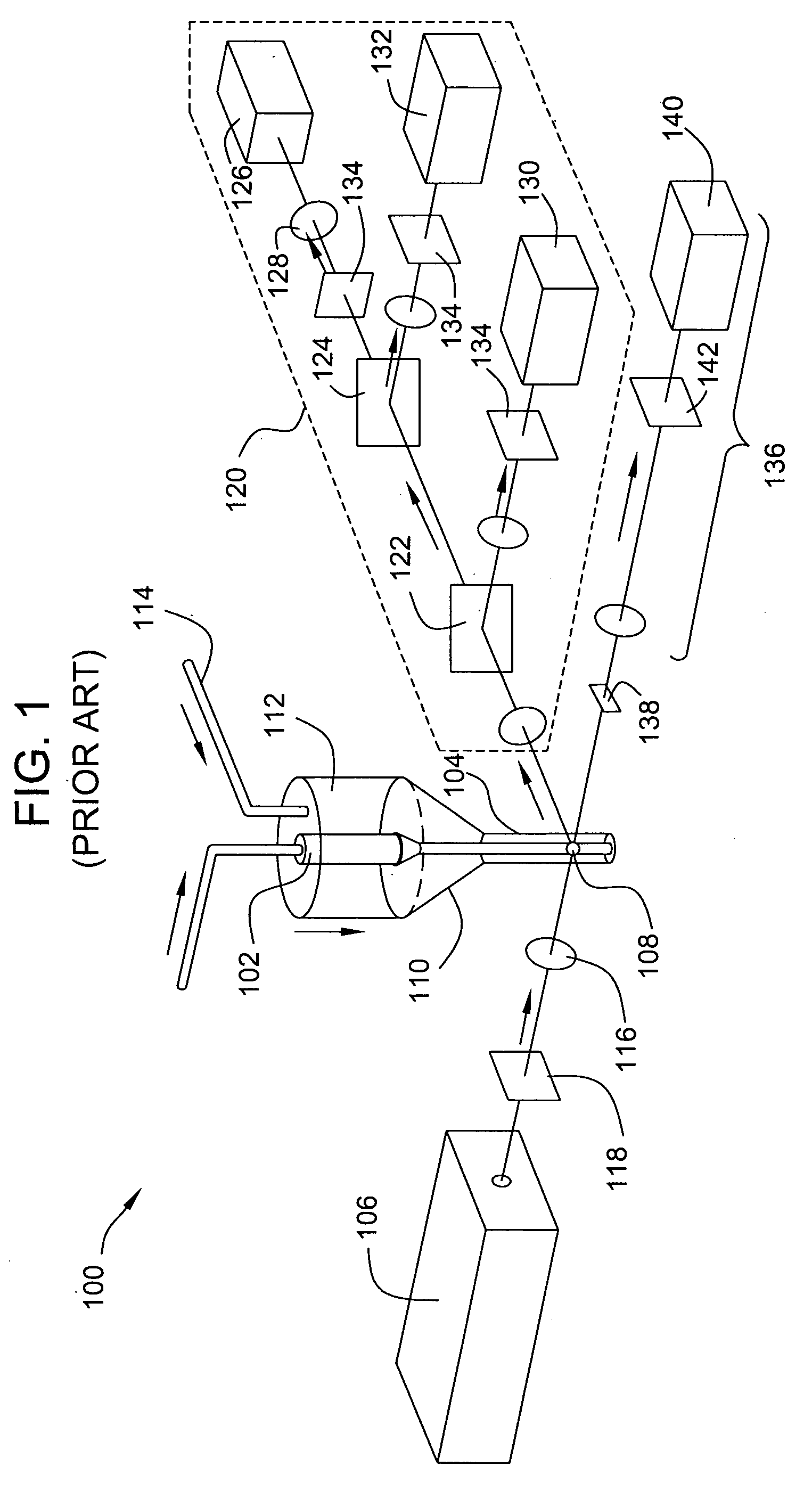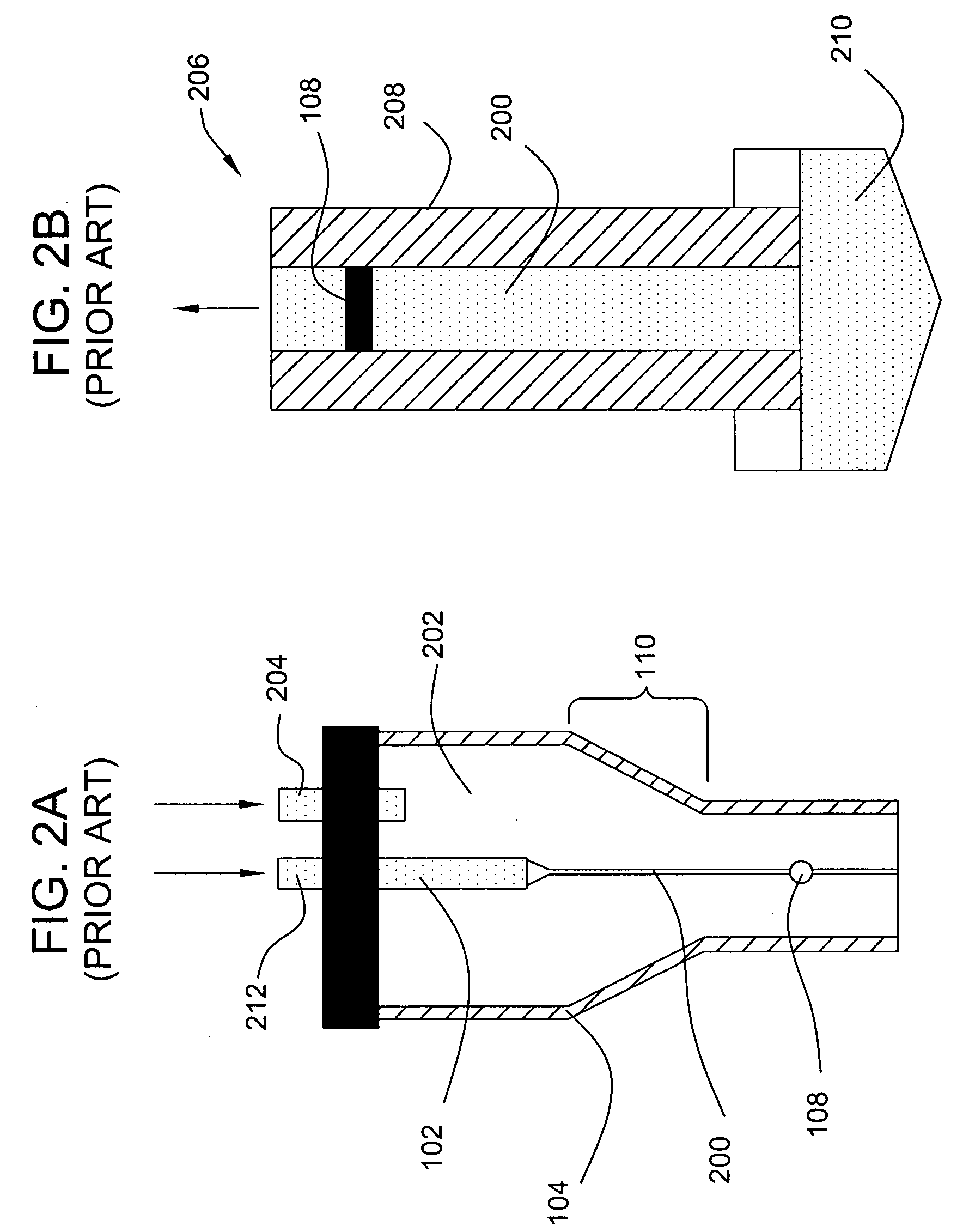Asymmetric capillary for capillary-flow cytometers
a flow cytometer and asymmetric capillary technology, applied in the field of flow cytometers, can solve the problems of time-dependent pulse shape variation, inability to accurately measure samples, and inability to meet the requirements of the bench-top system with more limited capabilities, so as to improve the measurement cv and reduce the position-dependent variation of pulse shape and amplitude. , the effect of improving the measuremen
- Summary
- Abstract
- Description
- Claims
- Application Information
AI Technical Summary
Benefits of technology
Problems solved by technology
Method used
Image
Examples
Embodiment Construction
[0056]Turning to the drawings, wherein like reference numerals refer to like elements, the present invention is illustrated as being implemented in a suitable environment. The following description is based on embodiments of the invention and should not be taken as limiting the invention with regard to alternative embodiments that are not explicitly described herein.
[0057]Position-dependent variations in pulse shape and in amplitude caused by scattering and refraction of light by the capillary walls in prior art capillary-flow cytometers may be significantly reduced through the use of improved capillary designs. In contrast to the square and round capillaries of the prior art, the cross-sectional shapes of the improved capillaries lack point symmetry. The replacement of a conventional square capillary with an asymmetric capillary embodying the present invention minimizes wall effects. CVs for fluorescent counting measurements performed by capillary-flow cytometers incorporating the ...
PUM
 Login to View More
Login to View More Abstract
Description
Claims
Application Information
 Login to View More
Login to View More - R&D
- Intellectual Property
- Life Sciences
- Materials
- Tech Scout
- Unparalleled Data Quality
- Higher Quality Content
- 60% Fewer Hallucinations
Browse by: Latest US Patents, China's latest patents, Technical Efficacy Thesaurus, Application Domain, Technology Topic, Popular Technical Reports.
© 2025 PatSnap. All rights reserved.Legal|Privacy policy|Modern Slavery Act Transparency Statement|Sitemap|About US| Contact US: help@patsnap.com



